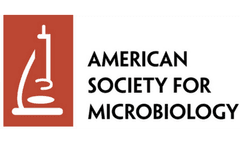Tumors To Immunologically Responsive Hot Tumors Articles & Analysis: Older
9 articles found
Introduction Chemotherapy with anti-tumor agents is currently one of the most important systemic treatments for cancer. However, direct treatment with drugs lacks specificity and sensitivity and tends to attack normal cells indiscriminately, resulting in side effects. Liposomes, as drug carriers, provide a superior solution for maintaining or enhancing the efficacy of chemotherapy while reducing ...
The concept of ADCs was first proposed by Nobel Prize winner Paul Ehrlich in 1913. But it was not until 1975, when hybridoma technology began to be used to produce monoclonal antibodies, that the era of ADC drug development truly began. Driven by increasingly mature technology, ADC drugs have gone through three iterations (Fig. 1). Although ADCs have gone through three iterations, current ...
In the past ten years, the number of antibody drug conjugates (ADCs) entering clinical trials has steadily increased. Currently, 9 ADCs have been approved, of which 5 are used for hematoma and 4 for solid tumor treatment. After more than 20 years of development, ADC biopharmaceuticals are becoming the main force in the treatment of cancer. Currently, one of the most important challenges when ...
Researchers at The University of Texas MD Anderson Cancer Center have identified a new strategy to reduce immune-related adverse events by targeting immunotherapy with the cytokine interleukin-6 (IL-6). The study, published in Cancer Cell, provides evidence for the concept of combining immune checkpoint blockers and cytokine blockers to selectively inhibit inflammatory autoimmune responses. ...
Simply put, CAR-T is to transform the patient's immune T cells in vitro by biotechnology, so that they recognize antigens on the surface of tumor cells, and then inject these cells back into the patient to achieve the therapeutic effect of recognizing and killing cancer cells. In 2017, CAR-T therapy was first approved by the FDA for the treatment of blood cancers such as leukemia and lymphoma. ...
Researchers at the Children's Hospital of Philadelphia (CHOP) have made a breakthrough in the treatment of aggressive solid cancers, and they have developed a new cancer treatment that targets proteins within tumor cells that are essential for tumor growth and survival, but this has not been possible before. Using the power of large data and advanced computational methods, researchers can ...
RNA is a hydrophilic, negatively charged macromolecule, and its ability to autonomously transmembrane is limited. Therefore, how to efficiently deliver mRNA to the cytoplasm and play a corresponding role is one of the key issues that limit the application of RNA therapy. The wide range of applications of therapeutic mRNA requires efficient and safe delivery methods. An ideal delivery system ...
Why do we need new cell contenders in the CAR field? Well, different CAR immune cells have different advantages and sometimes unique challenges or limitations. So, we began our discussion of alternative CAR-cell types with CAR-NK cells due to their current standing as the most popular alternative CAR-based therapy. However, the expansion of CARs to other cell types has already begun and ...
Proteins entering the eukaryotic secretory pathway commonly are glycosylated. Important steps in this posttranslational modification are carried out by mannosyltransferases. In this study, we investigated the putative {alpha}-1,2-mannosyltransferase AfMnt1 of the human pathogenic mold Aspergillus fumigatus. AfMnt1 belongs to a family of enzymes that comprises nine members in Saccharomyces ...





